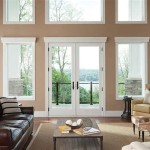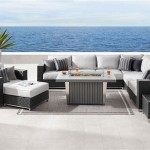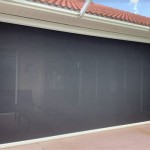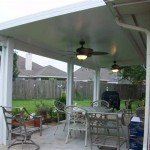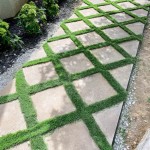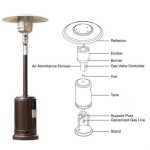How To Paint Wrought Iron Patio Furniture
Wrought iron patio furniture offers a timeless aesthetic and robust durability, making it a popular choice for outdoor spaces. However, exposure to the elements can lead to rust, fading, and a general decline in appearance. Painting wrought iron furniture revitalizes its look and protects it from further degradation. This process requires careful preparation, the right materials, and a methodical approach to achieve a lasting and visually appealing finish.
The longevity of a paint job on wrought iron furniture depends heavily on surface preparation. Skipping or rushing this step can result in premature chipping, peeling, and the reappearance of rust. Thorough cleaning and rust removal are paramount before applying any primer or paint. The subsequent application of primer and paint acts as a protective barrier, shielding the metal from moisture and other environmental factors.
This article provides a comprehensive guide to painting wrought iron patio furniture. It outlines the necessary materials, detailed instructions for each stage of the process, and considerations for achieving a professional and durable finish. Careful adherence to these guidelines will enhance the beauty and extend the lifespan of your wrought iron furniture.
Key Point 1: Preparation is paramount for a lasting finish.
The initial stage of painting wrought iron furniture focuses on meticulous preparation. This involves cleaning the furniture, removing any existing rust, and sanding the surface to create a suitable key for the primer. Ignoring these preparatory steps will significantly compromise the adhesion and durability of the paint job.
Begin by thoroughly cleaning the furniture. Remove any cushions, straps, or other accessories. Use a stiff brush, soap, and water to remove loose dirt, debris, and mildew. For stubborn stains or grime, a pressure washer set on a low setting can be used with caution, ensuring the nozzle is kept at a safe distance to avoid damaging the metal. After washing, allow the furniture to dry completely before proceeding.
Rust removal is a crucial step in the preparation process. Several methods can be employed, depending on the severity of the rust. For light surface rust, a wire brush or sandpaper (medium grit) may suffice. Scrub the affected areas vigorously until the rust is removed, exposing the bare metal beneath. For more substantial rust, consider using a rust remover product. These products are available in liquid or gel form and typically contain phosphoric acid, which chemically converts the rust into a stable compound. Follow the manufacturer's instructions carefully, ensuring proper ventilation and personal protective equipment are used.
Another effective method for removing heavy rust is sandblasting. However, this requires specialized equipment and should be performed by a professional or someone with experience. Sandblasting uses compressed air to propel abrasive particles against the metal surface, effectively removing rust and old paint. After sandblasting, the surface will be rough and requires further preparation before painting.
Once the rust is removed, sanding the entire surface is essential. This creates a slightly rough texture that allows the primer to adhere properly. Use medium-grit sandpaper to scuff the entire surface, paying particular attention to areas where rust was removed. After sanding, wipe the furniture down with a tack cloth to remove any remaining dust and debris. The surface should be clean, dry, and free of any contaminants before applying primer.
Protect the surrounding area before commencing the preparation process. Cover the ground with drop cloths to prevent staining from rust, old paint, or cleaning solutions. Wear appropriate personal protective equipment, including gloves, safety glasses, and a dust mask or respirator, especially when dealing with rust removal products or sanding.
Key Point 2: Selection of primer and paint is crucial for protection and aesthetics.
Choosing the right primer and paint is paramount for achieving a durable and aesthetically pleasing finish on wrought iron patio furniture. The primer acts as a foundation, providing a strong bond between the metal surface and the paint. The paint provides color, protection from the elements, and enhances the overall appearance of the furniture.
For wrought iron, a rust-inhibiting primer is essential. These primers contain chemicals that prevent the formation of rust by passivating the metal surface. Options include zinc-rich primers, which provide excellent corrosion protection, and epoxy primers, which offer superior adhesion and durability. Apply the primer evenly, following the manufacturer's instructions. Multiple thin coats are preferable to a single thick coat, as this reduces the risk of drips and runs. Allow the primer to dry completely before applying the paint.
When selecting paint, opt for an exterior-grade paint specifically designed for metal. These paints are formulated to withstand the harsh conditions of outdoor environments, including sunlight, rain, and temperature fluctuations. Alkyd-based paints and acrylic latex paints are both suitable options. Alkyd paints offer excellent durability and a hard, glossy finish, while acrylic latex paints are easier to clean and are more environmentally friendly. Consider using a paint that also contains rust inhibitors for added protection.
The choice of paint finish depends on personal preference. Glossy finishes are more durable and easier to clean but can highlight imperfections in the surface. Matte finishes offer a more subtle and sophisticated look but may be less resistant to scratches and stains. Semi-gloss finishes provide a balance between durability and aesthetics.
Application methods also play a role in the final outcome. Spray painting provides a smooth, even finish and is ideal for intricate designs. However, it requires proper ventilation and masking to prevent overspray. Brush painting is more labor-intensive but allows for greater control and precision, especially in hard-to-reach areas. Consider using high-quality brushes designed for the type of paint being used. Rollers are generally not recommended for wrought iron furniture due to the uneven surfaces.
Always test the primer and paint in an inconspicuous area before applying them to the entire piece of furniture. This ensures compatibility and allows you to assess the color and finish. Apply the paint in thin, even coats, allowing each coat to dry completely before applying the next. Multiple thin coats are preferable to a single thick coat, as this reduces the risk of drips, runs, and cracking.
Key Point 3: Proper application techniques and environmental considerations ensure a professional result.
Achieving a professional-looking finish on wrought iron patio furniture requires attention to detail during the application process. This includes using the correct techniques, working in a suitable environment, and allowing adequate drying time between coats. The surrounding environment can significantly impact the paint's ability to adhere and cure properly.
Before commencing painting, ensure the area is well-ventilated. If spray painting indoors, use a spray booth or open windows and doors to allow for adequate airflow. Mask off any areas that need to be protected from overspray using painter's tape and drop cloths. Wear appropriate personal protective equipment, including a respirator, gloves, and eye protection.
When applying primer and paint, hold the spray can or brush at a consistent distance from the surface. Apply thin, even coats, overlapping each stroke slightly to ensure full coverage. Avoid applying too much paint in one area, as this can lead to drips and runs. If drips or runs occur, correct them immediately by wiping the area with a clean cloth or brush. Allow each coat to dry completely before applying the next. Drying times will vary depending on the type of primer and paint used, as well as the ambient temperature and humidity. Refer to the manufacturer's instructions for specific drying times.
For intricate designs or hard-to-reach areas, consider using an artist's brush or a small foam brush. These brushes allow for greater precision and control, ensuring that all areas are properly coated. When painting joints and crevices, use a stippling motion to work the paint into the surface. Avoid applying too much paint in these areas, as it can collect and create unsightly drips.
The environmental conditions during painting can significantly impact the outcome. Avoid painting in direct sunlight, as this can cause the paint to dry too quickly, leading to cracking or blistering. High humidity can also affect the drying time and adhesion of the paint. Ideally, paint in a dry, well-ventilated area with a temperature between 60°F and 80°F. Avoid painting on windy days, as this can cause dust and debris to contaminate the wet paint.
After applying the final coat of paint, allow the furniture to dry completely for the recommended time. Avoid using the furniture or placing any objects on it until the paint is fully cured. Curing times can vary depending on the type of paint used and the environmental conditions. Refer to the manufacturer's instructions for specific curing times. Once the paint is fully cured, inspect the furniture for any imperfections and touch up any areas as needed.
Regular maintenance will help to prolong the lifespan of the paint job. Clean the furniture regularly with soap and water to remove dirt and debris. Inspect the furniture for any signs of rust or damage and repair them promptly. Applying a coat of wax or sealant can provide added protection against the elements.

How To Paint Wrought Iron Outdoor Furniture

Best Ways To Paint Wrought Iron True Value

Spray Painting Wrought Iron Furniture Life Love Larson

How To Paint Metal Patio Furniture

How To Paint Patio Furniture With Chalk

How To Paint Wrought Iron Diyer S Guide Bob Vila

How To Spray Paint Patio Furniture Like A Pro For Less Than 50 Lehman Lane

Reader Re Do A Colorful Patio Furniture Makeover Curbly

How To Paint Wrought Iron Patio Furniture Like A Pro

How To Paint Wrought Iron Furniture
Related Posts


